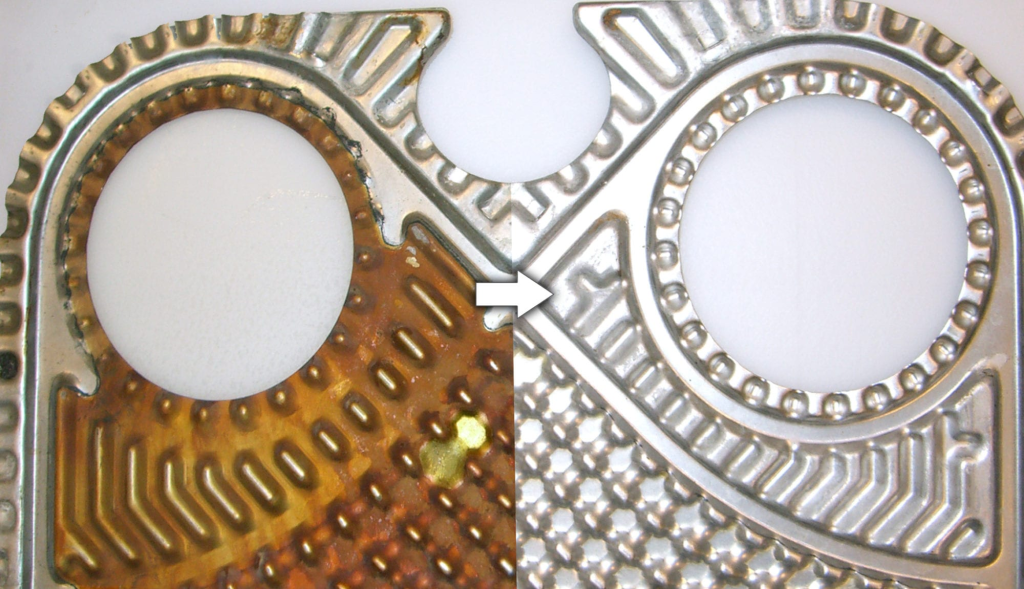
Maintenance and Care of Plate Heat Exchangers: Key Design Aspects in Mechanical Disassembly and Fluid Medium
2023-10-24 | Heat Exchanger
In the industrial sector, plate heat exchangers are vital equipment used to regulate the temperature of fluid mediums, ensuring the efficient operation of production processes. To guarantee the long-term stable operation of heat exchangers, regular maintenance and care are crucial. This article delves into the key steps of maintenance and care for plate heat exchangers, with a special focus on the design essentials concerning mechanical disassembly and fluid medium.

I. Mechanical Disassembly: Ensuring Precision and Safety in Operations
In the maintenance process of plate heat exchangers, mechanical disassembly is an indispensable part. The correct disassembly process ensures equipment safety and lays the foundation for subsequent maintenance work. Below are the key steps and precautions for the mechanical disassembly of plate heat exchangers.
1. Shutdown and Power Disconnection: Ensure the plate heat exchanger has completely stopped operating before proceeding with mechanical disassembly. Also, disconnect all connections related to power sources to eliminate any potential hazards.
2. Prepare Necessary Tools: Ensure you have the required tools ready, such as wrenches, screwdrivers, lubricants, etc. Depending on the model of the heat exchanger, ensure the size and type of tools are suitable for the relevant components.
3. Disassemble the Casing: Gently use tools to remove the casing of the heat exchanger to access internal components. When handling the casing, be careful not to damage any seals or connecting parts.
4. Prioritize Seal Components: Inspect components related to seals, such as gaskets, O-rings, etc. If any signs of damage or aging are found, replace them promptly to ensure the sealing performance for subsequent operations.

5. Document the Disassembly Process: During the disassembly process, take photos or make detailed notes whenever possible to aid in the reassembly process. This will help ensure all components are correctly placed back into their original positions.
6. Handle Internal Components with Care: Exercise extreme caution when disassembling the plates to avoid damaging the components by applying excessive force. Use appropriate tools to gently remove the plates.
7. Cleaning and Protection: After disassembly, clean the plates and other components to remove dirt and deposits. Simultaneously, employ suitable protective measures to prevent damage to the components during storage or transportation.
8. Record Maintenance Information: Upon completion of the disassembly process, document all relevant maintenance information, including the disassembly date, performed operations, replaced components, etc. This record-keeping will be invaluable for future maintenance tasks.
II. Key Design Considerations Ensuring Efficient Heat Transfer in Plate Heat Exchangers
In the operation of plate heat exchangers, selecting appropriate fluid media and corresponding designs are pivotal in achieving efficient heat transfer. The choice and design of the fluid medium can directly impact the performance and efficiency of the heat exchanger. Here are several key design considerations to ensure efficient heat transfer in plate heat exchangers:
1. Fluid Selection: Choosing the right fluid medium is crucial for heat transfer efficiency. Different industrial applications may require different fluids, such as water, oil, steam, etc. Consider properties such as thermal conductivity, specific heat capacity, viscosity, and chemical stability when selecting a fluid. Opt for a fluid with excellent heat transfer performance that can operate stably in the expected working environment.
2. Flow Path Design: The design of the flow path affects how the fluid flows between the plates, thereby influencing heat transfer efficiency. Ensure that the fluid is distributed evenly across the entire plate area, minimizing dead zones, and maximizing the heat transfer surface to enhance heat transfer efficiency.
3. Material Selection: Choosing the materials for the plates and gaskets is critical to adapt to different fluid media. Select materials that can resist corrosion and chemical erosion, ensuring the plates and gaskets maintain stable performance during long-term use.
4. Cleaning and Anti-fouling: Impurities and deposits in the fluid can affect heat transfer efficiency. Regular cleaning procedures prevent these issues, ensuring the cleanliness of the plate surfaces and maintaining optimal heat transfer.
5. Fluid Velocity and Pressure Drop: Appropriate fluid velocity is crucial for achieving optimal heat transfer efficiency. Too low velocity might lead to decreased heat transfer efficiency, while excessively high velocity can result in excessive pressure drop. By optimizing the design, ensure a balance between fluid velocity and pressure drop.
Conclusion:
Maintenance of plate heat exchangers involves mechanical disassembly and fluid media design, both of which are crucial factors in ensuring the efficient operation of the equipment. By following correct operational procedures and design guidelines, you can maximize the performance of the heat exchanger, prolong its lifespan, enhance production efficiency, and ensure the smooth progress of industrial production. If you require further guidance or professional assistance, we are available to support you at any time.